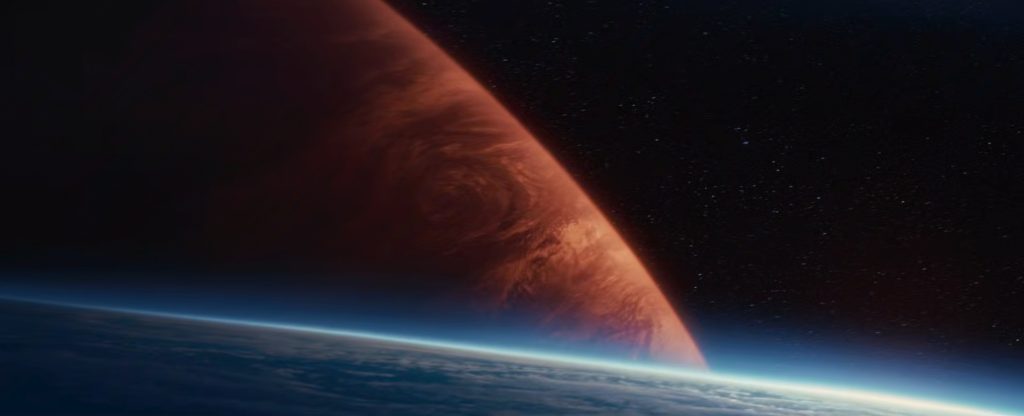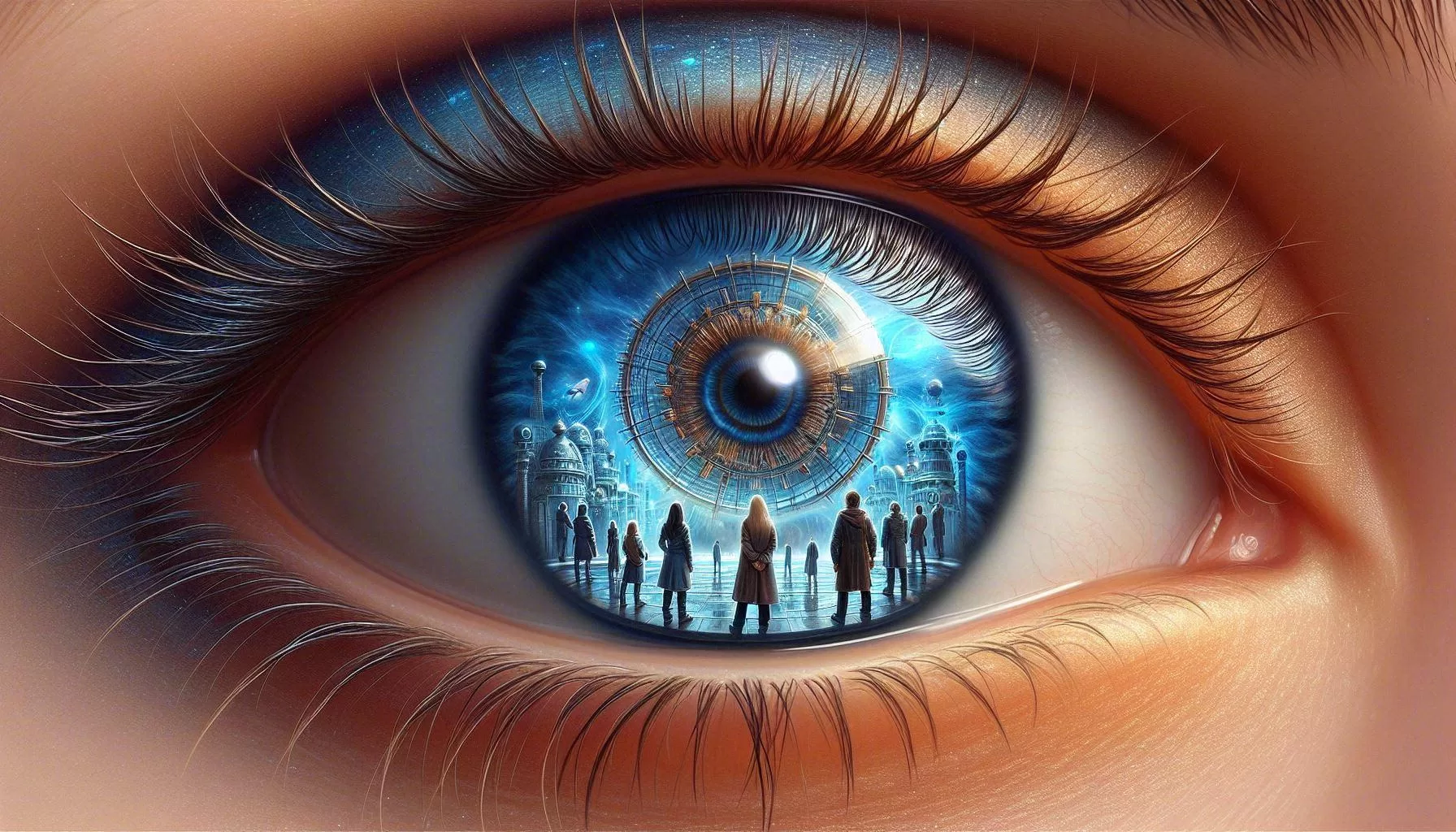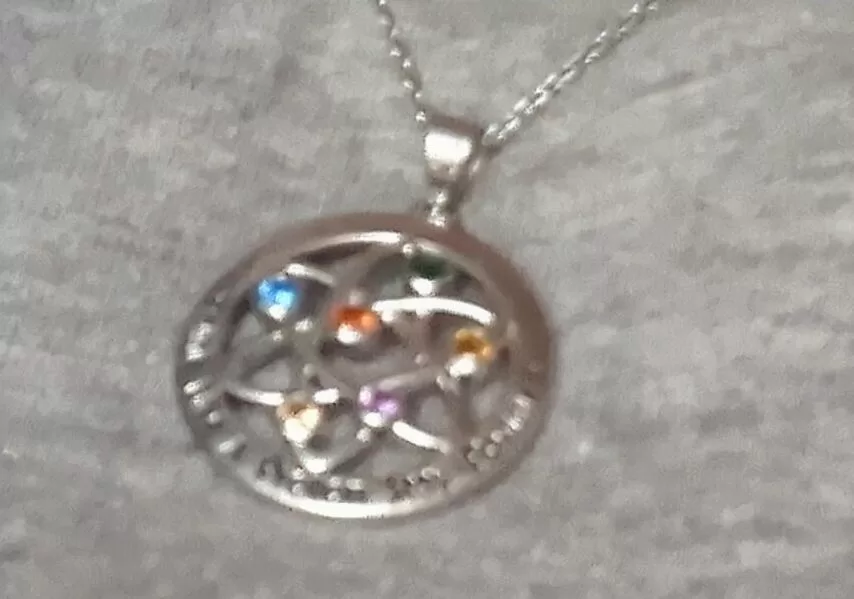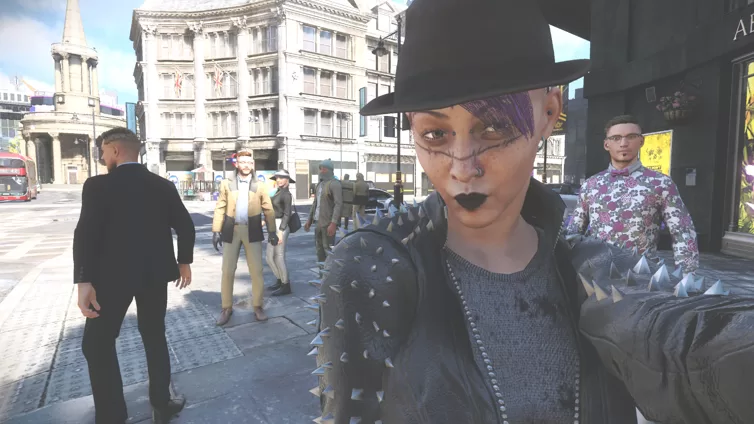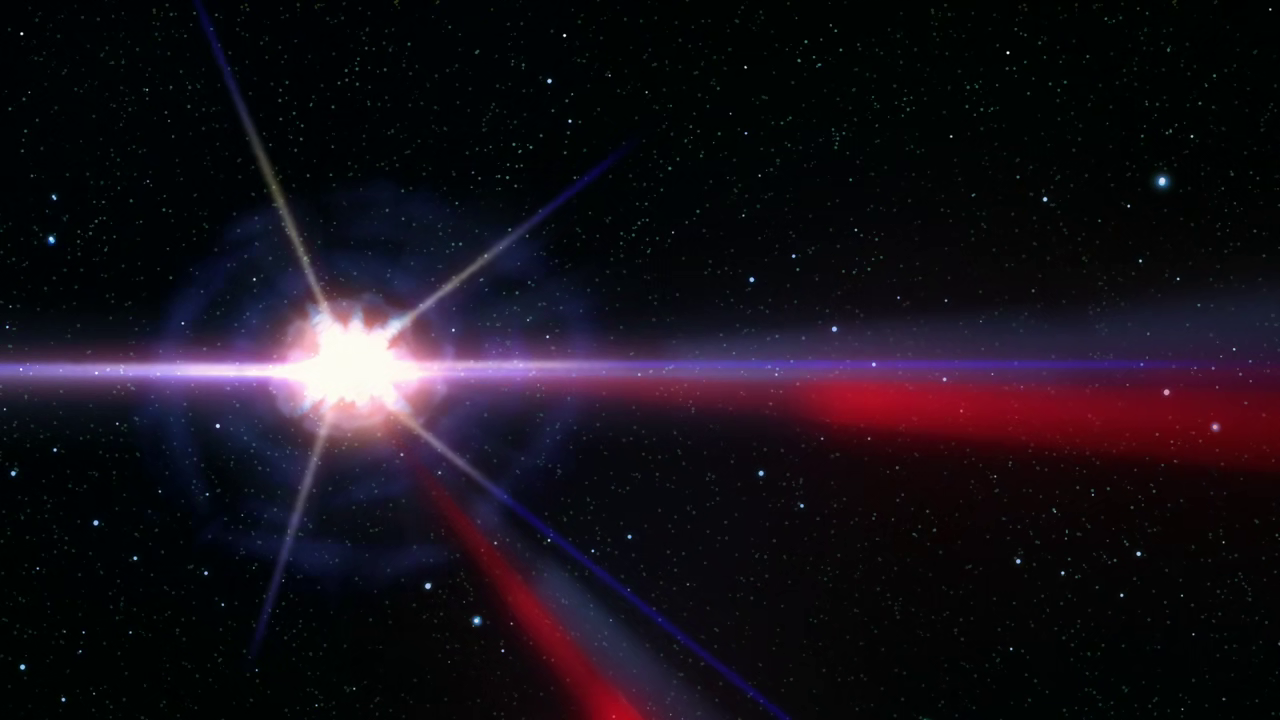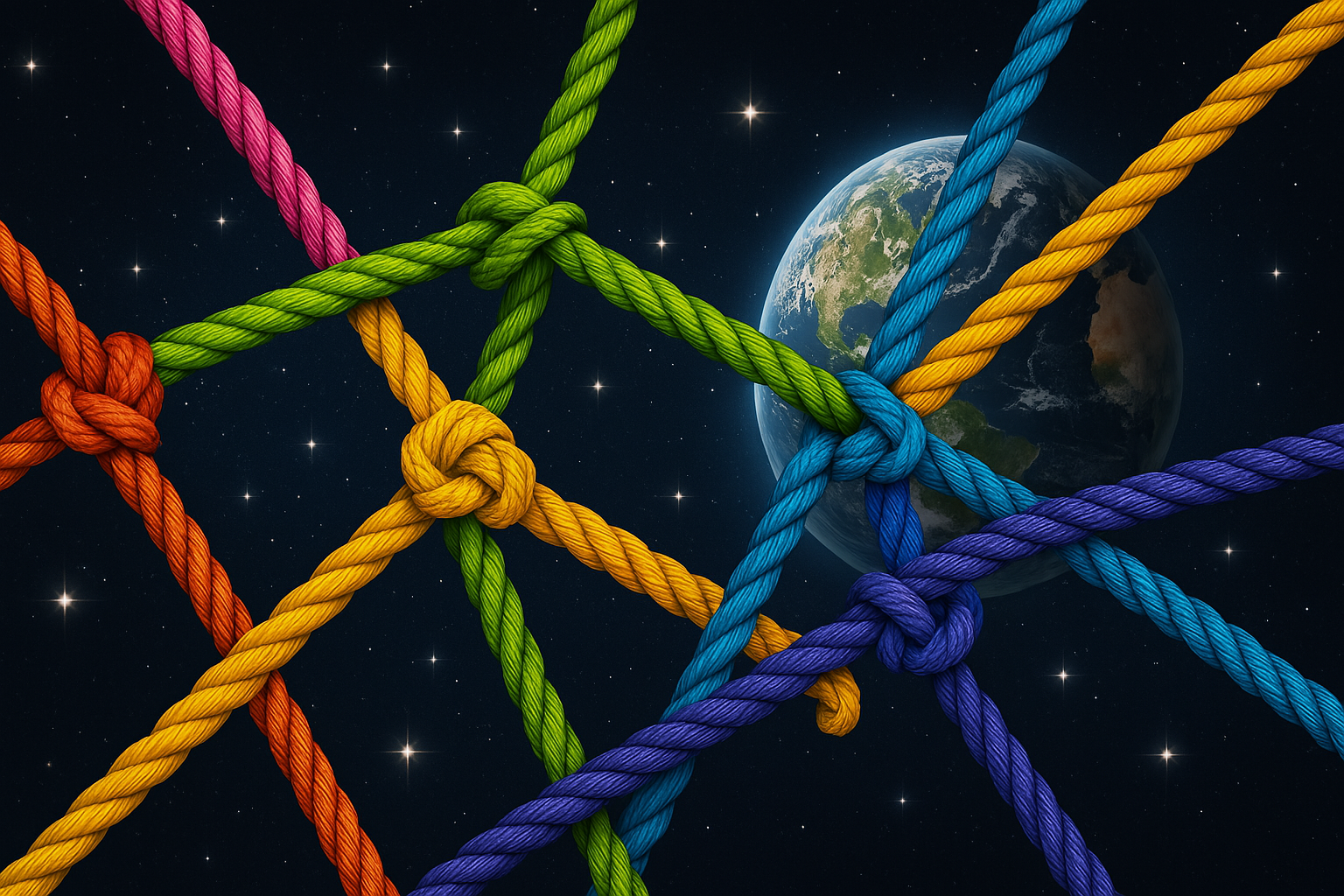© Cydonis Heavy Industries (C.H.I), Ltd (2025).
All rights reserved.
[SCENE START]
INT. BBC BROADCASTING HOUSE – STUDIO 4 – NIGHT (2025)
JONATHAN FINCH (50s, impeccably dressed, face a mask of strained professionalism) sits at a sleek, minimalist news desk. The studio is dark, save for the glow of monitors and a single spotlight on him. Opposite him is not a guest, but a curious device: a brass and Bakelite telephone, wires snaking from it into a humming server rack labelled ‘PROJECT CHRONOS’. The iconic BBC News globe spins on a screen behind him.

JONATHAN
(To camera, a practiced smile not quite reaching his eyes)
Good evening, and welcome to Perspectives. The program where we believe no issue is so settled it can’t be debated, and no voice so controversial it shouldn’t be heard. Our mission, as always, is to provide balance. To hear both sides.
He pauses, taking a slow breath.
JONATHAN (CONT’D)
Tonight, we take that mission to its ultimate conclusion. Using ‘Chronos’ technology, (which allows for audio communication across time), we will be speaking to a figure from history. A figure whose actions have, for eighty years, been presented from a single, overwhelmingly negative, viewpoint. In the interest of absolute impartiality, we are going to ask a simple question: were there any benefits to the Holocaust? And to answer, we are going live to the Wolf’s Lair, in November 1944, to speak with the German Chancellor, Adolf Hitler.
A nervous energy ripples through the off-camera crew. A junior producer is physically sick into a bin. Jonathan ignores it, his focus entirely on the antique telephone. A technician gives him a thumbs-up. The phone emits a crackle, then a series of clicks.
OPERATOR (V.O.)
(Filtered, distant)
…verbunden. Sie sind auf Sendung, mein Führer.
A voice, thin and reedy, yet bristling with a terrifying, familiar energy, cuts through the static.
HITLER (O.S. {On Screen.})
(In German, with English subtitles on screen)
Who is this? Who dares interrupt my strategic planning? Explain yourself.
Jonathan visibly swallows. His practiced neutrality is already being tested.
JONATHAN
Good evening, Chancellor. My name is Jonathan Finch. I’m a journalist with the British Broadcasting Corporation… calling from the year 2025.
There is a long pause. The only sound is the hiss of the time-stream.
HITLER (O.S.)
Sorcery. Is this a new weapon from Churchill? A psychological trick?
JONATHAN
No, sir, not at all. Think of it as… a very, very long-distance telephone call. We wanted to offer you an opportunity. History has, shall we say, judged your… racial purity project rather harshly. We at the BBC feel it is our duty to provide balance, to allow you to present your side of the argument. Specifically, on the, ah, perceived benefits of the Final Solution.
The word “benefits” hangs in the air, grotesque and obscene. Hitler, however, seems to process the request. The paranoia in his voice is replaced by intrigued arrogance.
HITLER (O.S.)
Benefits? Benefits! Of course, there are benefits! It is the most logical, most necessary act of national hygiene in human history! You speak from 2025? Then you must have seen the glorious result! A pure, strong Europe, free of the parasitic influence that has corrupted our blood and finance for centuries.
JONATHAN
(Nodding, taking a note on his tablet)
So, you would frame this primarily as a matter of… public health?
HITLER (O.S.)
It is the health of the Aryan soul! It is a spiritual cleansing! We remove the weak, the degenerate, the alien element, and the body politic thrives. Our economy, unburdened by their usury, becomes a marvel of efficiency. Our culture, unsullied by their decadent art and ideas, returns to its classical, heroic roots. We are creating a master race, and you ask me for benefits as if it is a choice between two brands of soap! It is destiny!
Jonathan’s professional veneer is cracking. His face is pale. He glances at his producer, ANNA, who is frantically drawing a finger across his throat.
JONATHAN
To play devil’s advocate, Chancellor… there was a significant human cost. Millions of… individuals were… negatively impacted. How do you square that circle from a utilitarian perspective?
HITLER (O.S.)
(A short, barking laugh)
“Individuals”? You sound like one of them. There is no individual, only the Volk. The Folk. Does a surgeon weep for the cancer cells he cuts from a body? No! He rejoices, for the body will live. We are the surgeons of humanity. The cost is irrelevant. The future is everything. I have freed Germany from a disease. Is that not a benefit your simple mind can grasp?
JONATHAN
But the methods… the industrial scale of the extermina— of the, uh, relocation. Many in our audience would find that morally… problematic.
HITLER (O.S.)
Your audience is weak! Corrupted by eighty years of lies! Morality is the will of the strong. Efficiency is a virtue! We proved that our methods were without peer. The scale was a testament to our conviction. It was a triumph of German logistics and will!
Jonathan stares into the middle distance. The concept of “balance” has revealed itself to be a black hole, sucking all decency and reason into its void. He is platforming pure evil, wrapping it in the language of a mundane policy debate. He abandons the script. His voice drops, losing its polished broadcasting tone.
JONATHAN
Did you ever visit the camps, Chancellor? Did you ever stand by the pits? Did you smell it?
The question is raw, human. It breaks the entire premise of the show. For the first time, Hitler is silent. The sneering confidence is gone. When he speaks again, his voice is a low, venomous hiss.
HITLER (O.S.)
What did you say?
JONATHAN
(Louder, firmer)
The smell. Of burning hair and flesh. Was that a ‘benefit’ as well? Or the sight of a child’s shoe in a pile of thousands? Was that a ‘logistical triumph’?
HITLER (O.S.)
(Screaming now, the voice distorting)
You! You are one of them! A Jewish trick! Lies! Slander! You will pay for this insolence! Germany will find you, even in the future! We will cleanse you all! We will—
The connection is abruptly severed. A technician rips off his headset, his face ashen. The studio is plunged into a deafening silence, broken only by Jonathan’s ragged breathing. He looks down at his hands, then up at the camera. The mask of the impartial journalist is gone, replaced by an expression of profound, soul-deep horror. He has provided “balance.” He has given “both sides” a voice. And in doing so, he has stared into the abyss, and dragged his entire audience in with him.
The red “ON AIR” light blinks off. But the damage is done.
[SCENE CONTINUES]
Anna rushes to his side. The studio door flies open and SIR DAMIAN HAWKSWORTH, the BBC’s Director-General, storms in, his face crimson.
SIR DAMIAN
Finch! Have you lost your mind? “The smell of burning flesh”? That wasn’t in the script! You were supposed to be a neutral conduit!
JONATHAN
(Standing, his voice trembling with rage)
Neutral? To that? We were asking for the benefits of genocide, Damian! The very notion of balance was the original sin!
SIR DAMIAN
Do you have any idea what you’ve unleashed? The phone lines are exploding. The network is crashing. The Home Secretary is on line one and I think he’s having an aneurysm!
From outside, a new sound penetrates the studio walls: the confused yelling of crowds, the shattering of glass, the rising wail of sirens. Anna holds up her phone, her hand shaking. The screen shows a live feed from Parliament Square. A mob is fighting with police. A banner is visible, bearing a twisted, ancient symbol. The headline reads: Far-right groups claim “vindication” after BBC Hitler broadcast.
JONATHAN
My God… they’re celebrating. They think he won the debate.
He looks at the Chronos device, the brass telephone now seeming like a totem of some forgotten, malevolent god. The fallacy wasn’t just in the question, but in the belief that some ideas could be safely debated at all.
JONATHAN
(His voice suddenly cold and clear)
We have to go back.
SIR DAMIAN
Absolutely not! The project is cancelled. The servers are being wiped.
JONATHAN
No. We opened this door. We have to show them what was on the other side. We can’t let his be the last word.
He looks past Sir Damian, his eyes finding the terrified young technician who cut the first feed.
JONATHAN (CONT’D)
I’m not asking. I’m telling you. Put me back on the air. And get me Auschwitz. January, 1945. Find someone who speaks Yiddish. I don’t care how. Do it now.
Sir Damian stares, apoplectic, but Jonathan is already sitting back at the desk, straightening his tie, his face no longer one of horror, but of terrible, righteous purpose. He is no longer providing balance. He is atoning.
JONATHAN (CONT’D)
(To Anna, his voice a low command)
And keep that camera rolling. Let them see all of it.
Anna, catching his look, nods slowly and speaks into her comms.
ANNA
We’re going live again. On all channels. This is no longer Perspectives. This is a public broadcast.
The technician, compelled by the sheer force of Jonathan’s will, begins frantically typing coordinates into the Chronos system. The Bakelite phone begins to hum once more. Outside, the sounds of chaos swell, a city teetering on the brink. The red “ON AIR” light flicks back on.
[SCENE END]
[SCENE START]
INT. BBC BROADCASTING HOUSE – STUDIO 4 – NIGHT (2025)
The red “ON AIR” light glows with an intensity that seems to suck the air from the room. On the monitors behind Jonathan, the BBC News globe is gone, replaced by a simple, stark caption: “LIVE BROADCAST”.
Jonathan leans into his microphone. The man who began the broadcast an hour ago—smug, professional, a slave to protocol—is gone. This new man is gaunt, his eyes burning with a zealot’s fire.
JONATHAN
(To camera, his voice low and raspy…)
What you just witnessed was a failure. Not a technical failure, but a moral one. My failure. I work for an organization that believes in balance, and I, like them, have worshipped that idea blindly. But some things have no balance. Some truths are absolute. We gave a platform to a great and terrible evil in the name of impartiality. And in the streets of this city, that evil has found new disciples.
He gestures vaguely towards the chaos outside.
JONATHAN (CONT’D)
There is only one way to answer a lie of that magnitude. It is not with debate, but with truth. We are going back. Not to a bunker, not to a seat of power, but to the end of the argument. To the place where all the theories of racial hygiene and national destiny found their final, logical expression. We are going to Auschwitz-Birkenau. January 27th, 1945. The day of its liberation.
Sir Damian stands frozen by the door, a silent, horrified statue. Anna whispers commands into her headset, her face a mixture of terror and fierce loyalty. The young technician’s fingers fly across his keyboard, his knuckles white.
The Bakelite phone crackles. It is not the clean connection of the Wolf’s Lair. This is a sound from hell. A wash of harrowing noise fills the studio: the thin, cutting wind whistling through barbed wire, a distant, rhythmic clang of metal on metal, and underneath it all, a sound that is almost subliminal, a low, collective moan of human misery.
On a side monitor, a video call connects. A frail, elderly man, PROFESSOR ELI WEINBERG, a Yiddish scholar from the University of London, appears. He looks bewildered.
ANNA (V.O.)
“Professor, just translate whatever you hear. Please.”
The technician isolates a thread of sound from the cacophony. It is a voice. A woman’s voice, so weak it is barely more than a whisper, humming a fractured melody.
JONATHAN
(His voice cracking)
“Can you… can you ask her name?”
Professor Weinberg swallows hard, his eyes welling up. He leans into his own microphone, and speaks in hesitant, gentle Yiddish.
(Subtitles appear on screen)
PROF. WEINBERG: Ken ikh fregn vehr du bist? (May I ask who you are?)
The humming stops. A long pause. The studio holds its breath. Then, the voice. It is thin, brittle as dry leaves.
LEAH (O.S.): Ikh heys Leah. Ikh gedenk nit mayn familia-nomen. (My name is Leah. I don’t remember my family name.)
Jonathan closes his eyes. He is no longer in a London studio. He is in the cold, the filth, the despair.
JONATHAN:
“Leah… My name is Jonathan. We are… listening. Can you tell us where you are? What do you see?”
Weinberg translates, his voice thick with emotion.
LEAH (O.S.): Ikh bin in der kazarme. Der shtank… der shtank iz umetum. (I am in the barracks. The smell… the smell is everywhere.) Di Rusn zaynen do. Zey hobn geefnet di toyern. (The Russians are here. They opened the gates.) Zey veynen. Di soldatn… zey veynen. (They are crying. The soldiers… they are crying.)
The screen behind Jonathan now shows the live feeds from London. The rioting is slowing. Confused faces are turning towards screens in shop windows, in pubs, in their hands. The hateful chants are faltering, replaced by an uneasy silence as the thin, Yiddish voice cuts through the night.
JONATHAN:
We heard another voice, Leah. A man who said what was done to you was… a benefit. That it was necessary.
The cruelty of the statement is immense, but Jonathan’s intent is clear. He is holding up the lie to the flame of her truth.
A sound comes through the speaker. A dry, rasping sound. It takes a moment for them to realise she is laughing. It is the most terrible sound any of them have ever heard.
LEAH (O.S.): A nutzen? (A benefit?) Ikh hob gezen mayn shvester’s shikh in a berg fun toyznter. (I saw my sister’s shoe in a mountain of thousands.) Mayn foter’s briln in a kasn. (My father’s spectacles in a box.) Der “nutzen” iz der roykh vos shtaygt fun di krematoryumes tog un nakht. (The “benefit” is the smoke that rose from the crematoria, day and night.) Zog dem man… zog im az zayn groyse daytchland iz geboyt gevorn af a barg fun kinder-beyner. (Tell this man… tell him his great Germany is built on a mountain of children’s bones.)
Professor Weinberg is openly weeping now, unable to translate for a moment. Anna has to prompt him. He takes a shaky breath and relays Leah’s words, each one a hammer blow to the studio’s silence.
JONATHAN:
(His own tears flowing freely)
Leah… what do you want us to know? What do you want us, in the future, to do?
There is a long silence on the line, only the whistling wind of that Polish January. When she finally speaks, her voice is not angry. It is exhausted. A soul scoured clean of everything but a single, final duty.
LEAH (O.S.): Gedenk unz. (Remember us.) Nit mit has, nit mit nekome. (Not with hatred, not with revenge.) Gedenkt nor az mir zaynen geven. Az mir hobn gelibt, un gelakht, un geveynkt. (Just remember that we were. That we loved, and laughed, and wept.) Zayt undzer zikorn. (Be our memory.)
The line goes dead.
The connection is gone. The studio is utterly silent. Jonathan looks up, directly into the camera lens. His face is a ruin, a testament to the horror he has channelled. There is nothing left to say. He has shown them the other side. He has destroyed the balance with the weight of a single soul.
He slowly, deliberately, reaches out and turns off his microphone.
On the screens behind him, the feed from Parliament Square shows the last of the mob quietly dispersing, their banners of hate now looking cheap and pathetic in the face of the abyss that had just been opened on national television. The sirens have stopped. London is quiet. The entire world seems to be holding its breath.
[SCENE END]
[SCENE START]
INT. BBC BROADCASTING HOUSE – STUDIO 4 – NIGHT (2025)
The silence in the studio is absolute, a vacuum where the horrors of the past and the chaos of the present have cancelled each other out. Jonathan Finch remains at the desk, his hand still resting on the microphone switch, a priest who has just concluded a terrible, necessary sacrament.
The spell is broken by the studio door crashing open. It’s not Sir Damian this time. Two men in dark suits, their faces grim and unreadable, flank a woman with severe grey hair and the unmistakable air of high government authority. This is the Home Secretary. Sir Damian shuffles behind them, looking like a ghost at his own funeral.
HOME SECRETARY
(Her voice is low, controlled fury)
“Jonathan Finch?”
Jonathan doesn’t stand. He simply turns his head to look at her. His eyes are empty of fear.
JONATHAN
“Yes.”
HOME SECRETARY
On behalf of His Majesty’s Government, you are under arrest. For misuse of state assets, incitement to public disorder, violation of the Official Secrets Act, and about a dozen other charges we’ll invent before breakfast. The Chronos Project is now a matter of national security. Everything is classified. Everyone in this room will be detained and debriefed for the rest of their lives.
She gestures to her men. They move towards Jonathan. Anna makes a move to step in front of him, but Jonathan raises a hand, stopping her.
SIR DAMIAN
(Stepping forward, his voice a pleading whisper)
“Minister, he… we… lost control. The broadcast… it was a mistake.”
JONATHAN
(Cutting him off, his voice clear and steady)
“No, Damian. The first broadcast was a mistake. The second was a correction.”
He finally stands, his gaze fixed on the Home Secretary.
JONATHAN (CONT’D)
“You can arrest me. You can classify this until the sun burns out. But you can’t make people un-hear it. You can’t erase Leah. For an hour, the entire world stopped arguing about what was true and simply listened to it. You can’t put that back in the box.”
The Home Secretary stares at him, a flicker of something unreadable in her eyes. She saw the feeds from the cities. She saw the riots stop. She heard the voice from 1945.
HOME SECRETARY
“You broke the world, Mr. Finch.”
JONATHAN
“No, Minister. I just held up a mirror to a world that was already broken.”
He offers his wrists to the men in suits. As they lead him out, he doesn’t look back at his producer or his disgraced boss. His last glance is at the Bakelite telephone, sitting silent on the desk, a relic that connected the present to its most profound and painful lesson.
[MONTAGE]
DAY 1: The UN Security Council in emergency session. The Russian ambassador, for the first time in decades, does not veto a British-led resolution. The resolution is simply a global commitment to broadcast Leah’s testimony, unedited, in every language, every year on January 27th.
WEEK 2: A university lecture hall. A history professor throws her syllabus in the bin. “Today,” she says to her stunned students, “we are going to talk about the difference between a fact and a truth.”
MONTH 3: Outside the real, preserved gates of Auschwitz-Birkenau. A small, simple plaque has been added to the memorial. It reads, in Yiddish and in English: Zayt undzer zikorn. Be our memory. A young backpacker, who looks German, quietly lays a single white rose at its base.
YEAR 1: A courtroom. Jonathan Finch, looking older, is sentenced. The judge’s words are conflicted, the expression on his face one of a deep inner turmoil. He speaks of law and order, but his voice falters when he mentions the “unprecedented nature of the evidence.” The sentence is unexpectedly light. Community service. A lifetime ban from broadcasting.
[FINAL SCENE]
EXT. A PRIMARY SCHOOL PLAYGROUND – DAY (A FEW YEARS LATER)
Jonathan Finch, greyer and softer around the edges, sits on a park bench, watching children play. He is no longer a public figure. He is just a man. He holds a small, worn book in his hands.
Anna approaches and sits beside him. She works as a freelance documentarian now, producing small, independent films about history and memory. They sit in comfortable silence for a moment.
ANNA
“They want to dismantle the Chronos device. Bury it in concrete a mile underground.”
JONATHAN
(Nodding slowly, not looking up from the playground)
“Good. It did its job.”
ANNA
“Do you ever regret it? Losing everything?”
Jonathan finally looks at her. The haunted look is gone from his eyes, replaced by a quiet, settled peace.
JONATHAN
“The man who started that broadcast lost everything. And he deserved to. But I didn’t lose anything that mattered. We asked a stupid, obscene question and got the only answer that has ever made sense.”
He looks back at the children, their innocent shouts of laughter filling the air.
JONATHAN (CONT’D)
She said, “Remember that we loved, and laughed, and wept.” She didn’t ask us to stop living. She asked us to be their memory.
He closes his eyes, and for a moment, he is not in a sunny playground in 2028, but in the whistling wind of a Polish winter, listening to a thin voice humming a fractured tune. And he remembers.
[FADE TO BLACK]
[Credits Roll; Set To Emotional, Ominous yet peaceful music.]

